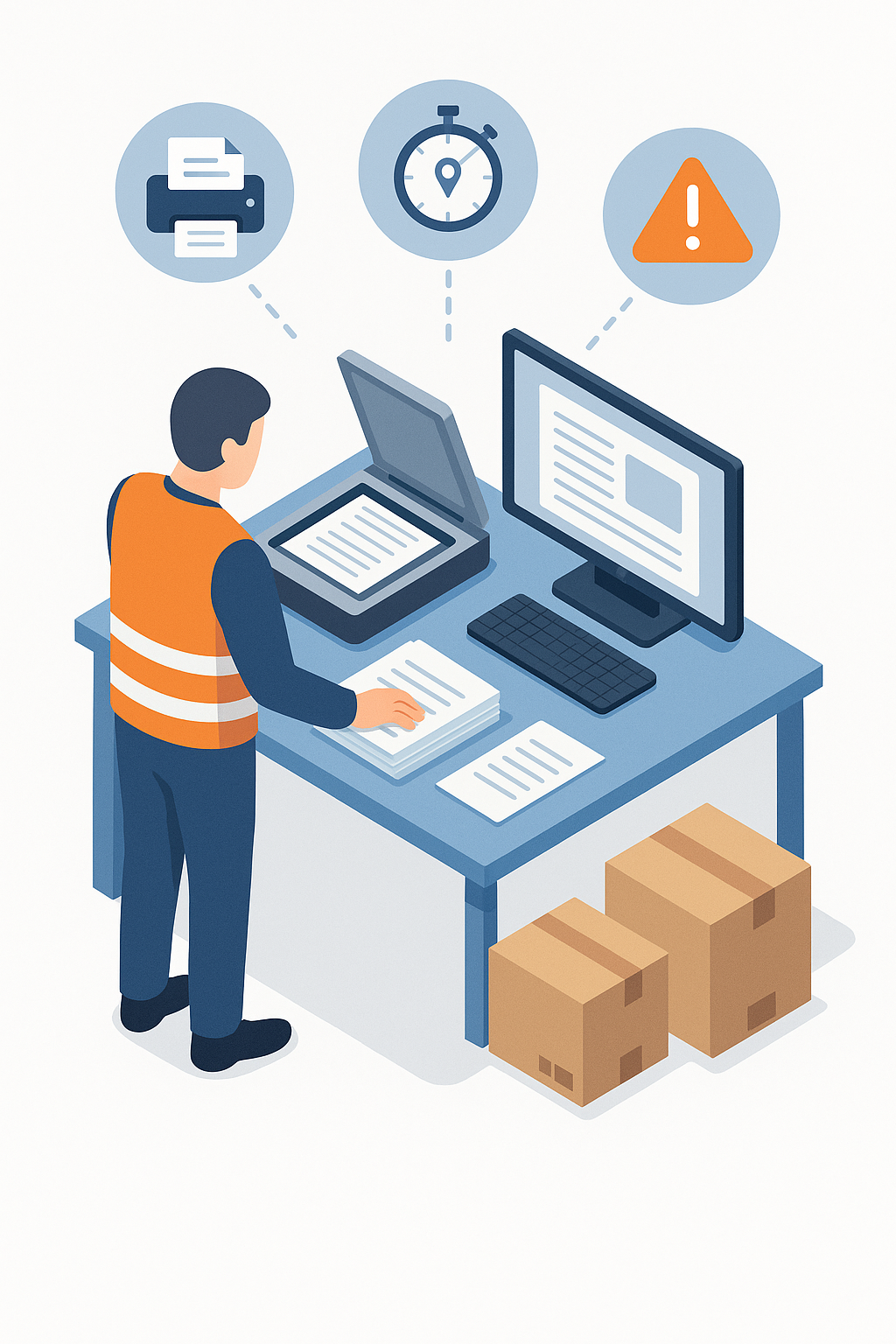Table of Contents
1. The silent time-waster in your logistics chain
2. What do we mean by manual document processing?
3. The impact on speed, errors, and compliance
4. Common bottlenecks in practice
5. How automation speeds up your processes
6. Example: From waybill to export document
7. What you need to get started
8. Conclusion: grow without added pressure
9. CTA: Schedule your demo
1. The Silent Time-Waster in Your Logistics Chain
In a world where deliveries need to move faster and faster, it’s staggering how much time is still lost to manually processing documents. From retyping waybills to checking customs forms — this invisible time-waster slows down your speed, efficiency, and customer satisfaction.
2. What Do We Mean by Manual Document Processing?
We’re talking about:
- Printing, scanning, and emailing documents
- Retyping data from CMRs, packing slips, customs forms
- Checking whether a form is fully completed
- Circulating documents for approval
- Saving files in folders or ERP systems
For small volumes, this is manageable. But once you scale, the problem grows exponentially.
3. The Impact on Speed, Errors, and Compliance
Manual work leads to:
- Slow processing times → documents getting stuck
- Errors → wrong data, wrong delivery
- Risk of fines → due to incomplete customs documents
- Lack of visibility → no one knows where the document is
- Staff overload → admin tasks increase, but the team doesn’t grow with it

4. Common Bottlenecks in Practice
✔️ A truck is ready but waiting for approved documents
✔️ Someone has to print, scan, and email a form to Finance
✔️ A customs document is incomplete — shipment delayed
✔️ An Excel file is manually updated with delivery data
5. How Automation Speeds Up Your Processes
With tools like DocHeart, you no longer need to:
- Retype any data
- Manually check documents for completeness
- Chase people for approvals
- Search folders for the right files
The software reads your documents (even scans or photos), extracts the data, validates it, and sends it to the right workflow.
6. Example: From Waybill to Export Document
📥 Step 1: Upload CMR (scan, PDF, email attachment)
🔍 Step 2: AI reads and extracts key data
✅ Step 3: Mandatory fields are automatically validated
📤 Step 4: Document is routed to the right person or ERP
📦 Result: Fast, traceable, error-free, and audit-proof
7. What You Need to Get Started
- One document type or process (e.g., CMR, invoice, customs form)
- Access to documents (uploads, folders, inbox)
- Involve your team or department for testing
- No heavy IT changes required
Start small with a Proof of Concept (POC) and quickly see results.
8. Conclusion: Grow Without Added Pressure
Want to keep growing as a logistics company? Then manual document processing simply isn’t scalable. It slows your operation, increases your risk of errors, and costs your team valuable time every day.
With automation, you build a solid foundation for speed, compliance, and scalability — without adding pressure.